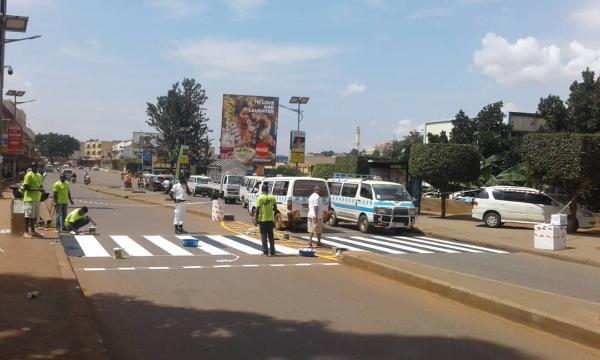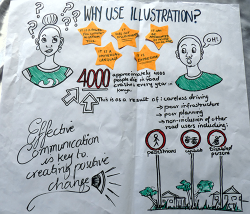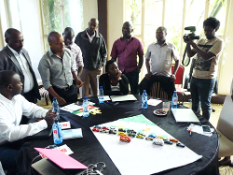Implementing Creative Methodological Innovations for Inclusive Sustainable Transport Planning (I-CMIIST)

Typically, half of East African cities urban residents walk to work (60% Kampala daily commute trips are on foot) yet infrastructure provision for non-motorised transport remains mainly aspirational. Inclusion of vulnerable communities in the development of streetscape infrastructure to support their journeys is rare; but considering their livelihood and social interaction needs in planning is even less common. Addressing sustainable mobility for developing country cities is a key urbanisation challenge linked to the delivery of the United Nations New Urban Agenda and Sustainable Development Goals (SDGs).

Building upon a completed GCRF network grant (CMIIST) that explored with artists, practitioners, planners and policy makers the potential benefits of using more creative methods to co-design urban infrastructure to enhance mobility, the I-CMIIST project will explore whether more creative co-design methods can reveal alternative more inclusive streetscape options that would facilitate safer urban mobility. Such streetscapes could encourage people to use more sustainable and non-polluting modes (walking or cycling) whilst also facilitating safer streets for the vulnerable residents already using these modes (including older people, children or disabled residents). We will explore with artists, designers, storytellers and transport planners whether using more creative engagement and participatory co-design approaches can identify alternative options for streets in Nairobi (Kenya) and Kampala (Uganda) neighbourhoods that could lead to safer, less polluting and more inclusive mobility for the city residents.
Our project team will compare case studies across both cities with business-as-usual planning activities to identify whether more creative and inclusive approaches lead to differing outcomes. These could include unexpected benefits such as improvised retail opportunities or social interaction spaces to create more vibrant but also safer streetscapes. Our learning should be relevant for other rapidly expanding cities in developing countries to ensure greater inclusion in urban planning helping to deliver SDG11 on ‘Make cities and human settlements inclusive, safe, resilient and sustainable’.
Read more about the project here.

Visit the i-CMiiST website
Project Lead
Steve Cinderby
E: steve.cinderby@york.ac.uk
Annemarieke de Bruin
E: annemarieke.debruin@york.ac.uk
Howard Cambridge
E: howard.cambridge@york.ac.uk

Twitter: @icmiist1
Watch more videos from the project on YouTube
Project Collaborators
- University of Leicester (Prof Mike Wilson, Co-I on project)
- Invisible Flock
- Viaqqio
- SEI Africa
- University of Makerere (Uganda)
- UN Environment (Share the Road)
Funder: British Academy



